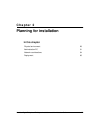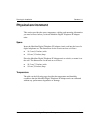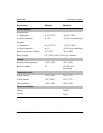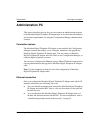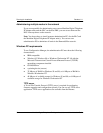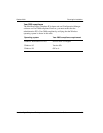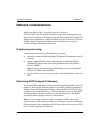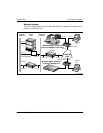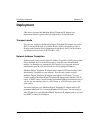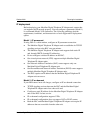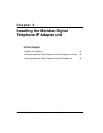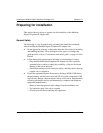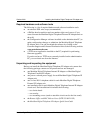
34 Meridian Digital Telephone IP Adapter Installation and Administration Guide
Planning for installation Standard 1.1
Network considerations
Refer to the Remote Office Network Engineering Guidelines
(NTP 555-8421-103) for detailed information on planning and preparing your
network for the addition of IP Adapter units. The Meridian Digital Telephone IP
Adapter unit communicates with the host PBX using the IP network. To use the
Meridian Digital Telephone IP Adapter unit in these networks, you must
consider the issues described in this section.
IP addressing and routing
To place and receive calls over the IP network, you must:
!
physically connect the Meridian Digital Telephone IP Adapter unit to the IP
network
!
assign a unique IP address and a subnet mask to the Meridian Digital
Telephone IP Adapter unit, unless using Dynamic Host Configuration
Protocol (DHCP)
Note: Similarly, you must assign a subnet mask, gateway, and unique IP
address to the RLC on the host PBX.
!
have the ability to send and receive traffic to and from the RLC on the host
PBX
Determining DHCP Assigned IP Addresses
If you use DHCP at the remote location, determine the Remote Office Unit's IP
address by checking the Network statistics for the RLC through Configuration
Manager. Log onto Configuration Manager, choose the RLC as the Device Type,
and then access Alarms/Stats/Logs
➝
Network Statistics. Enter the Unit ID of
the Remote Office unit that you want to review the statistics for. The DHCP
assigned IP address displays at the top of the window.
Note: If you are using a Network Address Translation (NAT) router at the
remote location, the IP address provided is a NAT address. To access the Remote
Office unit using Telnet, ensure that the NAT router allows Telnet access to TCP
port 23, and for upgrades, TCP port 69.




